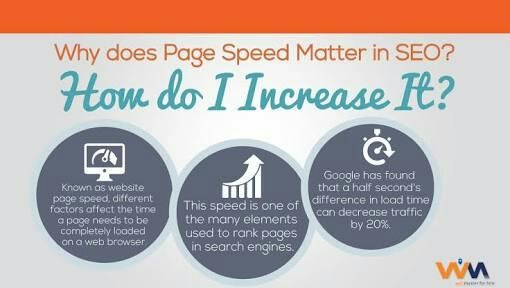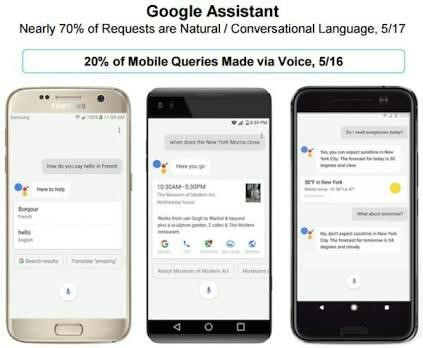Is your website’s traffic at a standstill? Kinda like a traffic jam, only without the traffic? You could be in trouble with the “SEO police”.
Table of Contents
Welcome To The Club
We’ve all been there. The excitement of publishing a new post that you “know” will go viral. You can actually see the share counter skyrocketing (and hear the cash register ringing).
The disappointing silence is such an extremely low one can sink into a depression. Even great bloggers like Seth Godin and Danny Iny have been through it.
If you are like many of us when we started out you’re probably the only visitor to your website. Ouch! I know it hurts…it was painful for me too. I actually thought:
#1. “I’m not good enough at this blogging stuff.”
#2. “Maybe I have offended the Google gods.”
#3. “Something is terribly wrong with all the people in the internet world.”
#4. “Someone broke the internet”.
As a newbie, you probably plunged into cyberspace believing you would wake up with a tribe of followers and an overflowing bank account. I know I did.
But traffic in cyberspace is becoming hard to come by despite the number of users increases. So how do you increase your chances of visibility as a tadpole amongst sharks? Three words:
Search Engine Optimisation.
My Quest To Vanquish The Monster Called SEO

I used to tremble with fear and trepidation whenever I heard that term “Search Engine Optimisation” or SEO as this mysterious monster is popularly known. I know I am not alone, we all fear what we don’t understand.
Whenever I asked people about SEO I simply got vague answers in hushed tones. And so one day I set off on a quest. A quest to find and vanquish this monster that was keeping traffic from my website. Slaying it became an obsession.
I found the monster. But boy was I surprised! SEO wasn’t the dragon everyone made it be. In fact, it was just a friendly cyber being that was more than willing to drive traffic to my website. The only catch was and is: get to know it well and put it to good use. Actually, when I got to know it well, I discovered there was not one but two SEOs!
This is my mission today. I have returned from my quest and I feel it is my duty to introduce SEO to you. Ready?
The SEO Twins
Yes. You got me right. There are two sides to SEO.
#1. On Page SEO. This is optimizing your webpage and content. You can manipulate it in your favor with ease if you know what to do.
#2. Off Page SEO. This is a bit more advanced but so was blogging a couple of years back. In other words, you can learn it if you are willing to invest in the education.
Basically, Off Page SEO deals with factors like social networks, your competitor’s online authority and a few other secrets in Google’s secure vaults.
In this article, I will try to simplify On Page SEO so that you can be able to write and produce optimised content. Content that will be discovered, devoured and distributed. Brace yourself for a traffic jam.
On Page SEO Fundamentals
This part of SEO is under your control. Never mind what the “gurus” may say, you can influence the search engines to visit your site and increase its ranking.
According to Hubspot, On Page SEO accounts for 25% of all SEO. But that 25% if done right goes a long way.
11 Simple Ways To Optimise Your Page
1. Write Sizzling Hot Content

I know you have heard this countless times but at the risk of being redundant, I will emphasize it too. The mistake many makes, when they delve into the mysterious world of SEO, is that they write for search engines. Once you fall into this trap, your website and content are doomed.
“Quality has become the #1 ranking factor in Google, especially since the Google Panda and Penguin updates.” Neil Patel
SEO is not just about ranking. It’s about ranking high with content that is valuable to people. Valuable content is shareable content and Google loves content that gets shared. This is why social media is getting so much attention in content marketing circles.
Join the bandwagon. Create content that people will have no choice but share.
If your post or website ranks high and is useless it will get few clicks and shares. That will bring its ranking crashing down. Not that dramatically but it will quickly lose its ranking.
It has been said from ages past by great men and I will say it again: content is king, after all, that’s what the internet is all about; content.
2. Research And Use Keywords Properly
When you come up with an idea or concept for your post, don’t jump into using the words you thought of. Research the keywords, or anchor terms, that define and explain your concept. For an in-depth read on keyword research, check out this article on the Kissmetrics blog.
I need to make something clear before I progress. In the “dark ages” of cyberspace (when the web became open to individuals), a single keyword went a long way in influencing SEO. Today, however, things have changed a great deal. In employing the keyword factor, you need to focus on, not only the keyword but long tail keywords, synonyms and topically related words and phrases.
The “Google Bots” are constantly evolving into more intelligent beings. For that reason, we need to employ more sophisticated tactics to court their favor.
Research which keywords will work for you and research their variants as well.
Once you have the required keyword, place it and its variants properly and naturally in your content. The major placement areas are:
*Headline
*Subheads
*First 100 words in your content (If naturally possible)
*Last 100 words of your content (if naturally possible)
* Sprinkle within the post (don’t overdo it. If you overdo it your content will be considered as spam)
*In the image tags
*In your URL
*In the meta description
As you write your content, don’t rigidly stick to your keyword. Instead, use its variants and synonyms. This is important because it signifies to the search spiders that your content is relevant in that area or field.
Pro Tip:
Keywords that work best are those your target audience uses when searching the net.
3. Structure Your Content Well
Search engines are not human, they depend on the structure to determine whether the content is relevant. This is where heading tags come in. Heading tags help search engines read the structure of your text. And, like any good essay, the structure is key.
Your content should have a clear headline, introduction, subhead, body, and conclusion. All these properly tagged.
Structuring content is not only good for the search bots but it also gives your readers a pleasurable reading experience.
Pro Tip:
Don’t just use default bold settings in your content. Employ proper H1, H2, H3 and whatever relevant tags.
4. Sculpt Captivating Headlines
“On average, 8 out of 10 people will read headline copy, but only 2 out of 10 will read the rest.” Copyblogger.com
The power of a headline can’t be overemphasized.
I want to let you in on a pro tip. When it comes to captivating headlines, your headline should target people and search engines.
A headline that is captivating to the reader encourages readers to read your content. The longer readers stay on your page, the more SEO points you will score.
A headline that captivates search engines increases your ranking. If your headline solves a problem, Google will love it.
How To Craft Captivating Headlines
In my green behind the ear days, I used to naively think a headline that was clever was a good headline. I used to write a headline, gloat about it to myself and then hit the publish button. No one could resist my headlines, or so I thought. I’m sure we all know about the deafening silence after publishing my posts. You are probably experiencing the same frustrations now.
Captivating headlines take time to write.
According to Jon Morrow of smartblogger.com, you should spend more time crafting your headline than you do the content itself. That’s how important a headline is.
Again, my point is not to teach you how to craft headlines. Many authority figures have written superbly on that. But just to make sure, here are a few elements that need to be in your headline according to CoSchedule.com,
- Use words that tug at the heart.
- Include words that inspire.
- Make sure your headline is the right length.
- Right mix. Your headline should have the right mix of common and uncommon words.
Try out CoSchedules headline analyzer here. This is an awesome tool to help you in your headline sculpting endeavors.
The last element in your headline is the most critical when it comes to seducing the search engines: keyword.
Your headline should include the keyword you want to rank for.
This is the mistake I used to make in my newbie days. I never cared if a headline contained a keyword or not. As long as the headline sounded poetic I believed I had done a good job. An optimised headline must contain your keyword.
Pro Tip:
Don’t forget to make use of H1 tags on your headline. Search engines are known to have an affinity for them.
5. Use Images And Optimise Them
Images are important when you are crafting content of any kind. Not only are they friendly to the eyes, but, if used properly, can also befriend search engines.
To maximise images for SEO, be sure to tag them. There are two tags that should be added to your image:
- Alternative Text, a.k.a ALT
- Image Title Attribute
These 2 tags must also include your keyword. But make sure it’s reader-friendly too.
“I’m not a techie, how do I do that?” I am not a techie too. But that shouldn’t stop you. There are a number of SEO plugins that make this very easy. Two of the current best is All In One SEO and Yoast SEO. These are essential WordPress plugins that make it easy to edit image attributes and much more to optimise your content for SEO.
Pro Tip:
Crop images to the required size before uploading them. Use your keyword as the “save as” title.
6. Don’t Neglect Meta Descriptions
Meta descriptions don’t necessarily influence SEO but they do influence the CTR (click through rate). The CTR though does influence SEO in that the higher the CTR, the more relevant your content will appear to be in the eyes of the search bots.
Again, even if you are not a techie, this is easy to do using the All In One SEO or Yoast SEO plugins for WordPress.
For an in-depth study on meta tags and their effect (or lack of it in other cases) read this article by Moz.
7. Links. Links
Links validate your website. And this is what search engines want; trustworthy websites and content. There are three basic types of links that help with SEO.
- Internal Links
These are links to your website or blog. They are useful in keeping people longer on your site. This contributes in a small way in adding relevance to your site. I know I have used the word relevance a lot. This is because that is what search engines primarily search for; information that is relevant for users.
- Outbound Links
These are links to other sites. When you link to another site to give readers more resources you give that site “SEO juice” but it also reflects back on your site as being a helpful site.
Pro Tip:
Do unto others as you would like others to do unto you. If you link to other sites, others will also link back to you.
Inbound Links
These are links from other websites to your own. These have a huge impact on SEO.
When other websites validate your own by linking back to yours, search engines rank you higher. Why? Inbound links show that you have something to offer and that is what Google, Bing and other search engines want; websites that offer valuable content. Relevant sites.
Get inbound links at any ethical cost possible. How?
- Write great content people will want to link to
- Make it easy to share your content (Easy to find and use share buttons are very handy)
- Ask for links. Do this strategically and only for websites that you can add value to. Don’t be a parasite.
Warning:
Spammy websites may link back to you for their own devious reasons. De-Link them yesterday! These, when caught by the “Google police” can have effects as drastic as blacklisting your site.
8. Reduce Your Website’s Load Time

Pages that load slowly get heavily penalized by search engines. This can be fixed though.
- Get an efficient web host. Don’t go for cheap, go for competent.
- Use themes that load quickly. When choosing a theme make sure it is not “heavy”. Read the theme description and ensure it’s a fast loader.
- Reduce the number of plugins you use. Some plugins do the same job, others multiple jobs. Know what each plugin you install does and make sure it is not duplicating what another plugin is already doing.
- Resize images. Most CMS systems, like WordPress, allow you to upload images and easily adjust them within the website itself. This is an awesome feature that comes at a price, it reduces your website’s speed. Instead, use an image editor to resize your image before uploading it.
Take advantage of tools like Pingdom’s website speed tester. This is a great tool that audit’s site’s speed and gives recommendations for improvement.
9. Embrace Google’s “Mobile First”
“The combined traffic from mobile and tablet devices tipped the balance at 51.2 percent, vs. 48.7 percent for desktop access, marking the first time this has happened since StatCounter began tracking stats for internet usage.” Tech Crunch.
This is a significant milestone in the history of the internet.
What this basically means is that as from October 2016, more people are browsing the internet on their smartphones and tablets than desktops and laptops. This statistic has two ramifications:
- If your website is not mobile responsive, you will lose traffic.
- The big one is that you lose SEO value.
Google’s updates have included mobile responsiveness to the criteria with which they rank websites. Responsive websites rank higher in Google’s SEO algorithms. Those that don’t embrace the mobile revolution get penalized.
3 Factors to consider as you embrace mobile.
- Performance: Make sure your website is efficient. Slow and inefficient websites are penalized by the Google bots.
- Content: not only should your content be sizzling hot and SEO optimised, but it should be easy to read on a small screen.
- User experience: Navigation should be easy and fluid.
Cyberspace is evolving at a fast rate and you have to do all you can do to be on top of the game.
10. Optimise For Voice Search

According to GeoMarketing, “Roughly 65 percent of people who own an Amazon Echo or Google Home can’t imagine going back to the days before they had a smart speaker, and 42 percent of that group say the voice-activated devices have quickly become “essential” to their lives.”
Due to ease of use and multitasking, voice search is increasingly becoming popular.
What should you do to optimise for voice search?
- Adapt Your Keyword Strategy For Voice
“Your keyword strategy must now be more conversational in nature and mimic how real people talk and ask questions verbally.” Search Engine Land
- Integrate questions into your keyword strategy.
Most searches by voice are question-based. People search for the “what”, “where”, “why”, “when” and “how” of life.
Your content strategy should answer these questions based on what your business does.
- Maximise on local SEO.
Most voice searches are location specific. The searcher may be looking for directions to a place or business. To be found easily, include snippets that contain your business name, address, and keywords on your website.
In short:
“Voice search is characterized by its prevalence on mobile devices and its focus on local searches.” Search Engine Watch
The future of search lies in voice. Take advantage of this technological advancement and smooth talk your way to Google’s top listings.
11. Maximize On Social Media
“In fact, social media profiles are often amongst the top results in search listings for brand names.” Kissmetrics.com
The impact of social signals on search engine rankings has become controversial since Google’s Matt Cutts announced that Google algorithms don’t include social media signals in their ranking factor.
Even though this may be true, social media profiles rank high on Google pages and this enhances online authority, awareness, and engagement. And this is basically what SEO is about.
Another thing is that people trust websites that have an active social presence. In fact, more and more searches are being made through social media platforms.
The power of social media is in driving traffic to your website.
“It’s certain that if you want to be a key player in the SEO game, you need a social media presence. This means, setting up full pages for your business on sites like Facebook, LinkedIn or Instagram and posting regularly.” Rank Sharks
Final Word
SEO algorithms are a secret that is as closely guarded as the secrets in the Vatican. Maybe even more. But as you apply the simple tips outlined here, you improve your chances of being discovered by a significant factor.
The world is waiting for you, my friend. Create sizzling hot content, optimise it and watch it go viral. That’s every content creator’s dream, isn’t it? And in this world of cyberspace, dreams become reality every day.
What are you waiting for? Revisit your old posts and get “SEOing”!
About The Author:
Kato is the Chief Content Strategist at bizcontenthub.com. A strong aversion to bland web copy has set him on a crusade to help you increase reader engagement by crafting hypnotic copy that will turn browsers into subscribers. Let’s get people talking about you.



